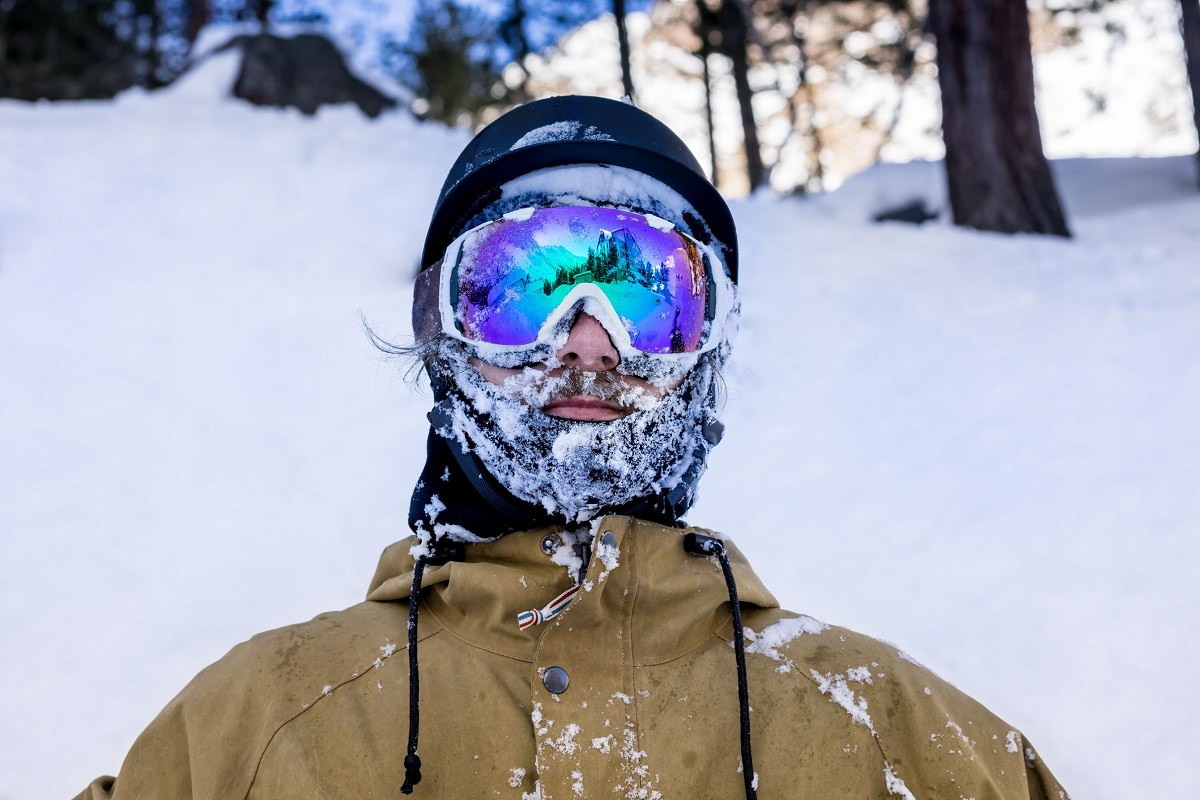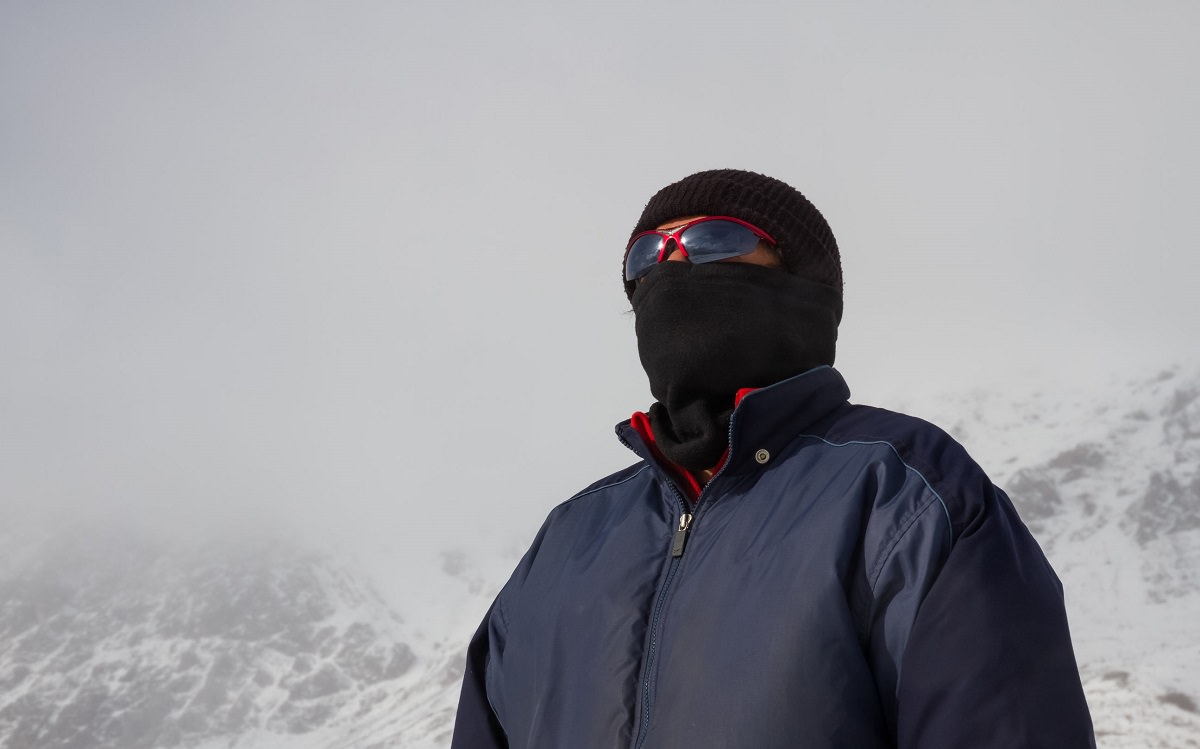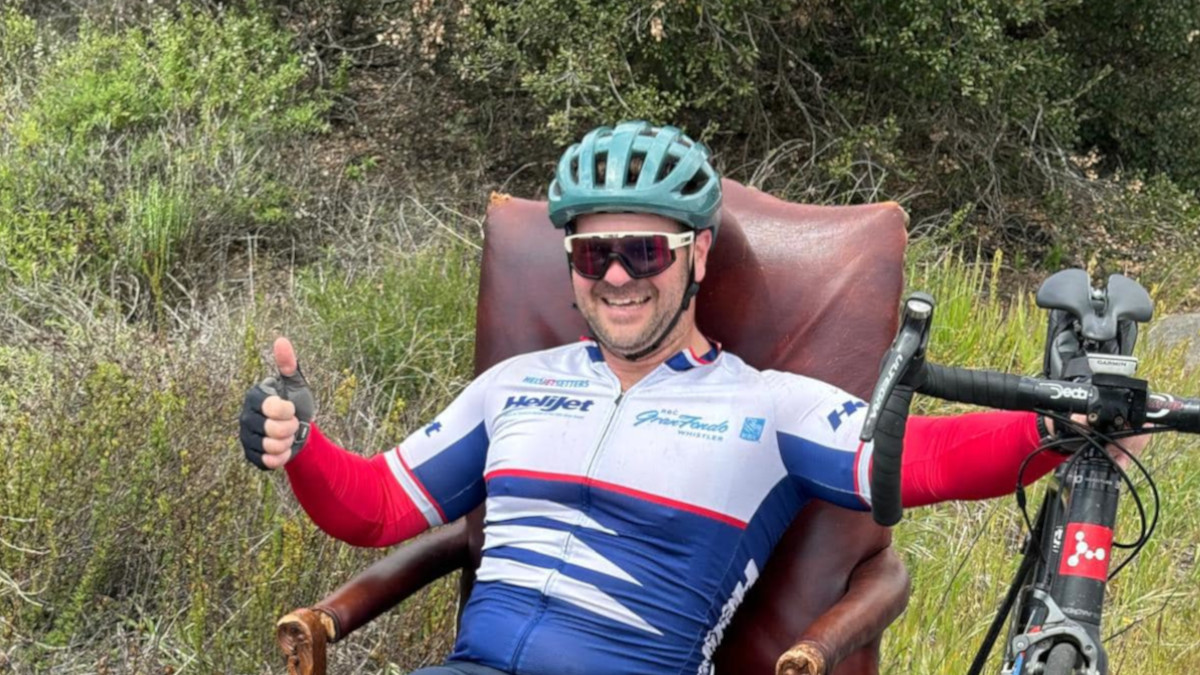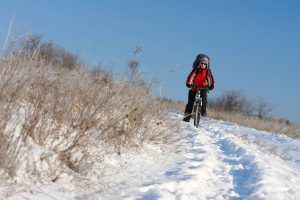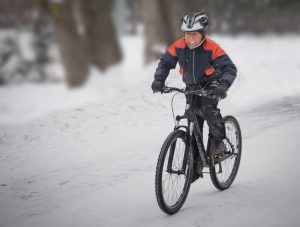What’s there to know about keeping a head warm? You put on a hat and that’s all. But wait! There’s more to it. You lose a lot of heat through your head. When icebiking, the heat loss through your head can be a blessing if you are working up a sweat. However, most of the time you are fighting wind chill on the face and ears due to your speed. Because of this warm headgear is important.
What You Need To Know About Winter Cycling Headgear
You are far more likely to fall in slippery conditions, so if riding on icy roads or frozen lakes, I recommend a helmet. Some icebikers just wear standard winter headgear such as knit caps instead of or in addition to helmets. If too bulky, these don’t work well under helmets, but for off-road biking where you are likely to fall into a snow bank they may be all you need.
1. You Can Use Helmet Liners
For use under a helmet, helmet liners can be found in bike stores or catalogs. These are usually polyester fleece and extend down to cover the ears. (Note: Some are made from polypropylene and are rather thin. Avoid these in favor of fleece liners).
Helmet Liners work fairly well down to about 10(F) but do not offer enough protection to the ears. Most helmet liners do not form a tight seal around the ears letting the wind blow in. Adding a common fleece headband underneath the helmet liner can often solve this problem
In recent years fitting headgear made from the latest microfiber and windblock fabrics has started to become available. In addition to warmth, these new fabrics offer wicking and low bulk, which means they fit well under bike helmets.
2 There Are Also Well-Priced Hats That You Can Use
Very reasonably priced hats suitable for under-helmet wear are available from a small Idaho company called FoxWear. They offer a variety of different materials, from microfiber to 300-weight Polartec. The hat at right from FoxWear fits well under a helmet and provides better ear coverage than most helmet liners.
3. Try To Block The Helmet Ventilation Holes
You may want to get a helmet cover to block those helmet ventilation holes that are so essential in summer. Keeping the wind out from under your helmet makes any underlying headgear a lot more effective. I’ve been known to cut sponge foam from packing boxes into chunks about the same shape as the helmet holes but a little bigger. These make good insulation in addition to blocking the wind. Cheap shower caps work well in rainy weather.
4. Cover Your Face With A Balaclava Or A Facemask
Another solution for when it gets colder, say below zero (F) is the balaclava or facemask. These provide coverage of the neck and most of the face as well as the head. This one, by Pearl Izumi, is typical of many on the market. Made of newer fabrics that wick water away from you, these tend to be comfortable even when you are working hard.
A helmet will fit over the balaclava and the helmet straps will need to be loosened a little to as they will tend to bind under the chin. Since it tucks under your jacket, no cold air swirls down your neck. However, this will not keep the snow falling off of the tree that you crashed into from finding its way to the small of your back.
On really cold and windy days the balaclava can be augmented with a fleece headband for better ear protection. I’ve ridden in minus 20(F) and a howling gale with ski goggles on top of the Balaclava. It felt like scuba diving, but I was warm. It was not particularly comfortable. Combine it with a black helmet for that Darth Vader look!
The downside of balaclava is that they are very hot. I usually can’t wait to get mine off after coming inside from a cold ride. They are a hassle to get on and off, and they get soggy from breathing. If it’s really cold outside you will have substantial frost build-up on the balaclava. Bearded icebikers report having the balaclava freeze to beards, making removal something to be deferred until melting takes place.
What to Avoid
Neoprene headbands. Loud, even in the wilderness with no sounds around you, these things make every gust of wind into a roar. Not all that warm either.
FAQs
What should I look for in a cycling cap?
The cycling cap should fit your head without being too tight.
What is the cycling cap called?
A cycling cap is called a casquette.
What is the most important accessory a cyclist can wear?
The most important accessory a cyclist can wear is a helmet.
Recap
So this is all that I have learned about keeping my head warm in all these years of icebiking. Do you have anything else to add? Let me know in the comments below!
Also Read
- The Purpose Of Cycling Caps – Your One Stop To Know It All!
- Winter Cycling Clothes – The Ultimate Clothing Guide
Should you have any questions or require further clarification on the topic, please feel free to connect with our expert author John Andersen by leaving a comment below. We value your engagement and are here to assist you.

